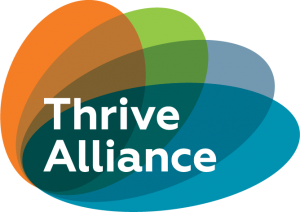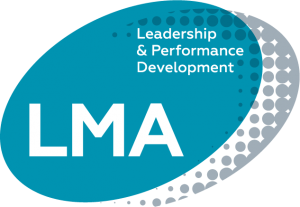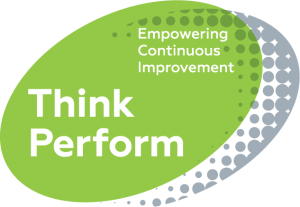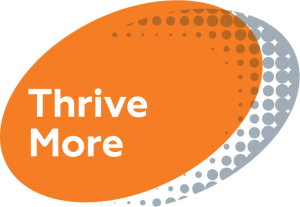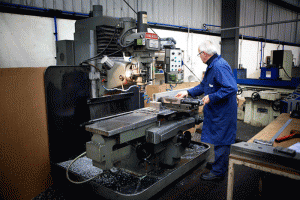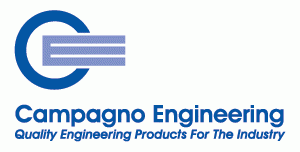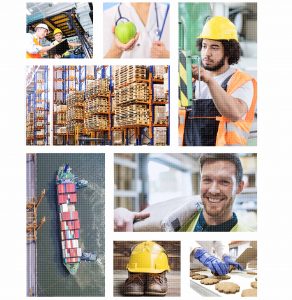0b8d74dade8fa59c57f40c683740ba47
Category Archives: Uncategorized
e62b3b5b2022cb8035975e121c5d83ac
0b8d74dade8fa59c57f40c683740ba47

An Interview with Think Perform Course Participant Steven Allender
-
How many and which of your staff went through a Think Perform program?
87 people have enrolled in the course, the people were from all areas of our business. Sales, Finance, Customer Service, Scheduling and all Operational roles.
-
What were the details of the program?
It is a 15 month program and is being run from the region’s main production and distribution plant at Lyndhurst. The program is a business wide improvement program named Project Advantage.
-
What made you decide to engage Think Perform?
Think Perform program leader Darrel North was the facilitator of the Horizon program at our Western Port plant, I was lucky enough to be given a tour of the plant whilst that was being rolled out and had the opportunity to extend an invitation for Darrel to visit our site at Lyndhurst. His knowledge of operational excellence is exciting and contagious, that combined with having knowledge of our business made the decision to engage Think Perform really easy.
-
What challenges did you/your people face when learning/applying Think Perform teachings?
The main challenge is managing the change of behavior of myself and my leadership. The program clearly and succinctly delivers the tools to help us make improvements in our plant, but this just can’t be a fad/program, this has to be a way of life moving forward.
-
What were the highlights/best bits of the program?
Biggest highlight: total site engagement in the program, this has been enlightening for all areas of the business as we have worked through our process maps and have been given an appreciation of what other departments do to satisfy our business needs and customers’ requirements. This extended not only from sales to operations but operations to sales.
-
What were the results of the program?
The program has helped the site break down barriers across all departments within our business. One of the main objectives was to help us change our internal culture and we are slowly improving in this area, an example of this is CI Wednesday’s – on Wednesdays all shifts have agreed to stay back for 10minutes for a combined CI discussion with the incoming shift which is breaking down shift on shift barriers.
-
Would you recommend Think Perform to other companies?
Definitely!!

An Interview With Think Perform Facilitator Darrel North
-
Darrel’s Background:
Darrel North, facilitator with Think Perform, has been a student of lean across many varied applications for over 15 years, facilitating both internal and external lean transformations and continuous improvement programs for retail, local and offshore manufacturing and various service based industries. Key program initiatives have focused on Product Speed to Market, Leadtime reduction and capacity increases for companies such as Pacific Brands – Hole proof, Bonds, Jockey, Sleepmaker, Sheridan, BlueScope Steel, Lysaghts Building Components, Telstra.
Tertiary qualified in both Learning & OD, as well as Lean Manufacturing, some of Darrel’s key projects and inititives include:
- BlueScope Steel Westernport Transformation partner lead, designed and developed lean leadership programs for 650 participants resulting in ongoing annual savings of $15m
- Led National Operational Excellence (Lean) strategy development and deployment for Pacific Brands
- Designed, created and led major “lean office” based change management initiative across Pacific Brands for New Product Development reducing time to market by between 30 – 60% and reducing cost to serve
- Integrated Lean Operational Excellence thinking into front end design, development and sales business processes across multiple functions for Pacific Brands Underwear Group.
-
What would be the one thing that you hope participants take away from their Think Perform course?
One of the biggest lean misconceptions is what lean actually is, with a lot of people having had some exposure to lean tools, they think that lean is all about tools and in particular 5S. Nothing could be further from the truth, lean is all about problem solving, and applying lean tools to solve particular problems such as elimination of waste in all its forms.
5s is a prime example where people think it is about housekeeping, shadow boards and cleaning up – when what you want your 5s to focus on is elimination of motion waste – housekeeping and everything else is a byproduct of 5s – not its main objective!
Lean is about optimization of your value chain by maximizing value added activity to your customers, optimizing essential non value add support services and focusing on eliminating waste. This is done by applying lean tools and principles to do 4 key things; create uninterrupted product and information flow, standardizing processes and procedures, problem solving when there is a gap against your standards and visual management to sustain your lean system.
Parallel to this, you need to work on the organisation culture focusing on the 2 key tenets of lean – Continuous Improvement and Respect for People, within these are 3 core elements that everyone in the organisation needs to bring to the table themselves in order for a successful lean implementation to occur and be sustained:
- Courage – ability to admit and face challenges and problems
- Humility – understanding that you don’t have all the knowledge and answers, but can solve problems together
- Kaizen – the deeper meaning of this is personal painful sacrifice, which entails looking at how you might need to change both within yourself and with what you do
-
What are common problems that participants face when learning or applying Lean concepts and techniques? Do you have any advice to overcome this?
Apart from the obvious time and resources, which can be overcome by planning and not trying to work on a hundred projects at once, the biggest threat to any lean implementation is the full management support – everyone from the CEO down needs to be involved, know and understand how lean works and what their role is in a Lean organisation as distinct from a traditional organisation. Lean is a mind shift change not something that you just delegate to your operations or warehouse manager. Lean and its key cultural principles were designed to optimize the whole of the organisation not just its individual parts.
-
What is your favourite Lean/Continuous Improvement tool/technique/concept. Why is it your favourite?
I think a good visual management system is the key to ongoing sustainability of a lean implementation. Visual management is designed to do a couple of key things;
- Status at a glance: as close as possible to real time information of the operations (both service or production operations) focusing on gaps allowing for quick and timely intervention as required.
- Lean management system – focuses the organisation on its gaps and implements problem solving to address the issues at root cause, transparency and accountability.
It identifies and makes problems visible, provides a structure for team leaders to follow to maximize their impact (standard work) and at a shop floor level engages the shop floor in problem solving – this is the true heart of a lean organisation, transparency of problems being worked on by those who best know the processes.
What is the best/most unique/most interesting way that you’ve seen clients apply lean/CI tools and techniques?
To support changing layouts and moving both machines and operations around to create flow, some of the teams I have worked with have built scale models of their plant or office, and engaged their workforce in building them. This allows for a more visual discussion around proposed changes as part of the PDCA process.
-
Any last tips/advice for readers of this interview?
Focus on solving problems using lean tools, not just implementing tools, and think about how you will support the cultural change required once you start engaging with your workforce. Take a long term strategic approach to your organizational lean transformation, allow for mistakes to be made in the implementation –but listen and learn from them. Find your own “true north” and stay the course!

Build a Strong Foundation for Success
As you develop your skills as a Lean Leader, you are building the foundation for success. Success is your career and increased success in the areas you influence.
When you lead the implementation of Lead practices and principles, you create a positive influence in the following three areas:
- Your own team members
- The work climate
- The overall organisation
Your influence in the organisation: Regardless of the size of your organisation, filling your position of leadership, calls for willingness to identify with your organisation’s purpose and values to support it with your attitudes and your actions, and to facilitate the positive changes needed to the organisation’s ongoing continuous improvement and success.
Regardless of the type of your organisation – whether it is a provider of services, a distributor of goods, or a manufacturer, you are expected first of all to get the best possible results through your people. Given defined human and financial resources, you must reach certain productivity goals. As well as inspiring and upskilling your people, you much constantly look to eliminate waste (non-value added activity or cost) through implementing Lean systems, practices and tools.
You are effective as a team leader only when you continue to improve the productivity and reduce the costs of producing your product or services.
Although your personality, characteristics and skills are important, your value to the organisation can be measured only how effectively you are fulfilling its mission and achieving cost-effective results.
Your influence on your own team members: As a leader you must understand and embrace the needs and wants of the members of your work group. If you concentrate exclusively on your own needs and goals, neglecting those of your team member, a deep rift in team relationships could develop. If you’re achievement orientated, you may be tempted to boost your own self-esteem and even downplay the contributions to continuous improvement initiatives and projects made by other team members. When other team members feel that their efforts have been ignored, or that their value is not appreciated, they can become disengaged. Consequently, they feel less responsibility for being productive or contributing to further improvement activities and changes. Avoid this destructive pattern at all costs. When you and your team members enjoy the positive results of shared responsibility and recognition, you team will thrive and you will become an exceptional Lean Leader. Remember, people go where they are wanted, but only stay where they are appreciated.
Your influence on the work climate: When you adopt a no-limitations belief in each persons’ worth and potential, you begin coaching each team member with an enthusiasm that says “You can do it!” Your confidence in them gives them maximum opportunity to grow, to meet their own needs and to contribute to the continuous improvement and success of your department or work group. When you believe in the ability of people to identify positive changes and perform productively, your expectations become a self-fulfilling prophecy.
People tend to live up to what’s expected of them by others, especially by those they consider authority figures. When you demonstrate that you believe your team members can succeed, they are willing to take more growth risks and embrace change. A no-limitations belief in people also makes it easier for you to delegate various responsibilities to them. When you demonstrate your confidence in their ability to perform, they will accept the challenge and work harder to meet your expectations and provide them with the required training and support.

Embracing Change for Improvement
As a decision maker committed to reducing waste through leading continuous improvement thinking and practices in your organisation, you will be embracing change on a daily basis.
Change means risk to many people and there are several pitfalls and challenges that go hand in hand with change. However, you can avoid these if you are willing to risk disturbing your own comfort levels when choosing to change.
Listed below are a few challenges that you should consider when making a changes for continuous improvement:
It will become necessary to defend yourself against traditional ways of thinking. “We’ve always done it that way”. You may have to do without approval from fellow workers for a time. You may also encounter resistance, especially if you are young or new at the job. Not only do some people instinctively resist chance, they may tell you that they are unable to learn a new procedure or change an old habit. When you believe in your decision to change something, simply reinforce the need to change and the benefits of the change. Remain calm and unemotional, but determined. Be confident and lead by example.
People will be more likely to accept change when they see you embracing it with enthusiasm. When they see you are thriving in a change environment, they will be more willing to take risks associated with a given change. Let your team members know that change is inevitable. Reassure them that both you and your organisation are committed to positive and proactive change for improvement.
Sometimes when seeing the extent of the changes required, it can seem completely overwhelming. Often the overall change cannot be made in one easy step. Usually multiple stages of change happen concurrently or in gradual steps and it is easy to forget that in life we rarely make the entire change in one attempt. One of the best ways forward is to break larger continuous improvement projects down into smaller projects or action steps that can be embraced one at a time. As a guiding rule – “For most people it is easier to embrace change when that change is gradual.”
Don’t be afraid to try new ideas or processes. However, if you fail, fail in a correct way. In many productive environments, people don’t understand the value of trying and failing. This is unfortunate because failure, when done properly can be a good thing. The correct way to fail means approaching change correctly, doing it quickly, at a low cost and never the same way twice. You don’t want to have too much money or time hinging on any one change initiative. If you do, then failure can be harmful, taking time and money away from other opportunities. Testing your process on smaller scale projects allows for the risks to be lessened and the flow on effect to other areas to be reduced. Don’t forget to learn from your failures so that you don’t repeat them in the future.
Change IS necessary and it’s NOT evil. Lean to love it and you will be in a great position to succeed. Leadership Management Australia has a variety of complementary resources which can be used to help support any change environment.
Sustainable change. Better results.
Today we are embracing a giant milestone event! We have refreshed the Think Perform brand and we are announcing the creation of Thrive Alliance, a brand joining together our group of companies.
Thrive Alliance is the umbrella brand that joins together our group of complimentary and specialised brands, all with the same purpose – creating exceptional results through people.
In itself, the name Thrive Alliance speaks to the vision for our group of companies and brands; an alliance of people, brands, products and services which empower our Participants and Client Organisations to thrive.
The launch of Thrive Alliance and the development and additions to the products and services offered, is a result of ongoing feedback from our Clients and Participants. We believe it is our responsibility as your trusted training and development partner to provide tried and tested development programs which deliver measurable results and R.O.I whilst innovating and releasing new tools and courses which satisfy a broader range of your needs and requirements. The Thrive Alliance Framework allows us to do just that.
So how does it all fit together?
THINK PERFORM – Empowering Continuous Improvement.
Sustainable Change. Better Results.
The proven best choice for empowering people to drive continuous improvement and to positively impact culture, results and the bottom line.
LMA – Leadership and Performance Development.
Empowered People. Better Results.
Leadership Management Australasia is the proven best choice for unlocking the potential in people to positively impact results and the bottom line.
THRIVE MORE – A range of best-in-class courses, tools and solutions to positively impact your people’s performance.
As opposed to the Premium Programs offered by LMA and Think Perform, Thrive More will offer short courses and workshops predominantly delivered over half, one or two days. At this stage, our Thrive More products include:
· Emotional Intelligence
· Productivity and Performance Improvement
· Lean Foundation Workshops
· Sales Foundation
· ….and many more to come
THRIVE PARTNERS – A network of complimentary trusted partners adding value to your business.
Our success over the years is because we have not tried to be all things to all people. However, we have many clients that ask us for recommendations to providers of products and services which are outside our offering. Over time, we will be growing a network of trusted Partners which can provide quality products and services to our clients when the need arises.
To find out more, call 1800 333 270 or click here to visit the Thrive Alliance Website.
There are many more improvements and new innovative initiatives scheduled for release in 2017-2018.
Stay tuned for more exciting news from Think Perform and Thrive Alliance!

Golden North
The Opportunity:
Based in regional South Australia with a rich history spanning over 90 years, Golden North identified the need to become more competitive as a means to better cope with increasing costs across the supply chain and manufacturing process.
“We needed to become more competitive, this meant that we needed to identify opportunities to sustainably eliminate waste, specifically but not limited to production planning, overproduction, process flow, transportation and material waste. ” General Manager Peter Adamo
The Solution:
Golden North undertook Think Perform’s Manufacturing Excellence Program. Participants gained insight into removing wasteful activity from their workplace by application of appropriate Lean tools and continuous improvement.
The Result:
Together with Think Perform, Golden North has developed the ability to improve productivity, reduce waste and better manage their business processes by being open to change through implementing continuous improvement ideas into their workplace.
“From quick wins and projects we have realised $53, 277 in savings per annum and are in the process of making further improvements on site which will double the annual savings” General Manager, Peter Adamo
CLICK HERE to view full case study.

Campagno
The Opportunity:
Campagno recognised the need to become more competitive to better cope with increasing costs across the supply chain and manufacturing process.
“The Australian market is extremely competitive, downward pricing pressure is caused by overseas competitors, in addition to competition from local suppliers” General Manager Campagno, Paul Campagno
The Solution:
Campagno Engineering staff undertook Think Perform’s Manufacturing Excellence Program. Participants gained insight into removing wasteful activity from their workplace by application of appropriate Lean tools and continuous improvement.
The Result:
The engagement and foundation that was laid by the Think Perform team has helped Campagno increase their ability to sustain changes made, leading to better culture across the business.
“Having our staff skilled in Lean means we can focus on continuous improvement to drive efficiency, reduce production costs, focus on developing new products, expand into new domestic and overseas markets and promote our quality and clean credentials” General Manager Campagno, Paul Campagno
CLICK HERE to view full case study.
Lean Manufacturing: For Customer Satisfaction and a Healthy Bottom Line
Lean Manufacturing techniques can be applied to small, medium and large businesses and have been proven to boost profitability and customer satisfaction.
Everything within the Lean manufacturing model is aimed towards maintaining focus on the two key metrics of profitability and customer satisfaction in order to remain relevant and competitive.
What exactly is ‘Lean’? We can look at the general accepted Lean manufacturing definition for some clarity on the philosophy and the process behind it:
Lean manufacturing or Lean production (often simply ‘Lean’) is a systematic method for the elimination of waste within a manufacturing system. Lean is centered on making obvious what adds value by reducing everything else.
Each facility and organisation will be different. However, adopting Lean manufacturing and working some effective Lean manufacturing courses company-wide into general operations will positively affect any given workforce with:
- Improved profitability: Lean manufacturing makes it more possible for companies to save money of labour hours, resources and wasted stock
- More efficient workforce: With a set of standard procedures, personnel can focus on what matters as opposed to activities that waste time such as looking for the right tool
- Better service: In a more streamlined workspace, workers can direct their attention to their customers as opposed to fixing broken processes
- Safer workplace: In a cleaner, safer work environment, workers are less at risk, more happy and therefore more productive
This division between what is waste and what is valuable is one of the first key points to get clear when we are talking about customer satisfaction and profitability. Based on the concept of Continuous Improvement, the process Lead thinking employs to simplify this segmentation process is one of constant searching for better ways to identify, analyse and resolve the issues around the existence of waste in the workplace.
Step 1 in Lean Manufacturing: Identifying Waste
What can be considered waste? In ‘Lean’, waste can take many forms and according to the philosophy of Continuous Improvement, waste always exists. To be truly Lean, the pursuit to reduce waste is a constant and ongoing one. While waste can appear in many forms, there are a few clearly defined types of waste that are considered to be the major issues in the way of achieving Lean manufacturing:
- Defects – Defects that result in rework or scrap can be a major cost to organisations
- Overproduction – Production that is made before it is needed or more products are made than required
- Waiting time – Time not used effectively is a waste. Idle time is often the result of poor planning or poor resource utilisation
- Not Utilising Employees – Not utilising people’s knowledge, skills and talent
- Transportation – Unnecessary transporting of products between processes adds no value to the product
- Inventory – Holding too much product or stock not being processed
- Motion – Unnecessary bending, stretching, walking and lifting by workers should be reduced
- Excess processing – Simple methods can replace lengthy detailed processes or operating procedures
Step 2 in Lean Manufacturing: Analyse and Sort
Once we are able to successfully identify where the source of the waste is, the next step is to better analyse and sort waste. While Lean is not so much about using a set of tools to implement large changes in one fell swoop, it is about fostering a continuous and sustained process of improvement across the entire organisation.
Keeping in the spirit of this ongoing process, a set of practices emerged initially from the key Japanese companies responsible for much Continuous Improvement and have begun working their way into much of the Lean manufacturing training appearing in more Western literature.
Lean Manufacturing 5S Philosophy
The five steps are based on five Japanese words and are focused on creating a safe, clean, and well-functioning workplace. A simplified explanation of the practice can be:
Sort: Remove unnecessary items form the work space. Attache removal tags to infrequently used items or items to be replaced.
Set: Customise the work area to improve overall efficiency. Keep important materials nearby and introduce visual organisation to assist a streamlined workflow and improved efficiency.
Shine: Keep the work area clean by finding sources of contamination and eliminating them.
Standardise: Assign tasks and create mutually agreed upon schedules so everyone knows their responsibilities and timetable.
Sustain: Ensure that 5S is a long-term, company-wide goal. Analyse results often, hold team mettings and train workers on the importance of Lean thinking.
Only one of several Lean tools, the Lean Manufacturing 5S practice as a whole is aimed at eliminating waste and instead creating value through facility and process organisation. No matter to what scale the Lean Manufacturing 5S practice is enforced, businesses both large and small can enjoy numerous benefits from adopting the methodology.
Step 3 in Lead Manufacturing: Resolve and Train
In terms of resolving the issue of waste, it is a key part of Lean to acknowledge that there is no end point to the process of reducing effort, time, space, cost and mistakes. In a true Lean transformative organisation, there will always be a need to return to the first stage and work through the entire process again.
However, a key part of sustainable Lean manufacturing lies in goal setting and training. For Lean to be its most effective, everyone needs to be involved in the process of identifying, analysing and sorting through waste issues.
This relates directly to the ‘Sustain’ step as part of the 5S philosophy; ensuring that Lean manufacturing training is a primary concern and goal company-wide is essential to maintaining the quality of work and the safety of the environment for all workers.
By identifying, analysing and reducing Waste in the workplace using Lean principles customer satisfaction will inevitably increase and do so profitably.
